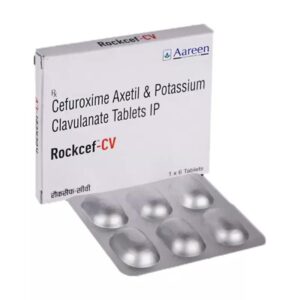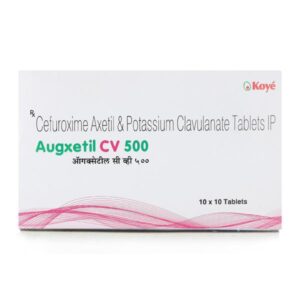CEFUROXIME + CLAVULANIC ACID
Cefuroxime: Cefuroxime is an antibiotic medication that belongs to the class of drugs called cephalosporins. It is primarily used to treat various bacterial infections in adults and children, including respiratory tract infections, skin and soft tissue infections, urinary tract infections, and certain sexually transmitted infections.
Cefuroxime works by inhibiting the growth and replication of bacteria. It does this by interfering with the synthesis of the bacterial cell wall, which is necessary for the bacteria to survive and multiply. By targeting the cell wall, cefuroxime weakens the bacteria, making it easier for the body’s immune system to fight off the infection.
The dosage of cefuroxime can vary depending on the specific infection being treated, the severity of the infection, and the age and weight of the patient. It is available in various forms, including tablets, extended-release tablets, and intravenous solutions. It is typically taken orally, with or without food, but it can also be given intravenously in a hospital setting.
As with any medication, cefuroxime can cause side effects. Common side effects include gastrointestinal disturbances such as nausea, vomiting, and diarrhea. Other possible side effects include headache, dizziness, rash, itching, and allergic reactions. It is important to seek immediate medical attention if any severe side effects occur, such as difficulty breathing, swelling of the face or throat, or severe skin reactions.
Cefuroxime may interact with other medications, so it is essential to inform your doctor about any other drugs or supplements you are taking. It is also important to complete the full course of treatment even if symptoms improve, as stopping the medication too soon may allow the infection to return or worsen.
Overall, cefuroxime is an effective antibiotic that is widely used to treat bacterial infections. However, it is important to follow your doctor’s instructions and report any concerning side effects for proper management.
Clavulanic Acid: Clavulanic Acid is a medication that belongs to the class of drugs called beta-lactamase inhibitors. It is often used in combination with certain antibiotics, such as amoxicillin, to increase their effectiveness against bacteria that produce beta-lactamase enzymes. Beta-lactamase enzymes are responsible for breaking down antibiotics and rendering them ineffective against bacterial infections.
The primary use of Clavulanic Acid is to enhance the activity of antibiotics and treat various bacterial infections, including respiratory tract infections, skin and soft tissue infections, urinary tract infections, and middle ear infections.
The mechanism of action of Clavulanic Acid involves irreversibly binding to beta-lactamase enzymes, inhibiting their activity. By inhibiting these enzymes, it helps protect the accompanying antibiotic from degradation, allowing it to effectively target and kill the bacteria.
The dose of Clavulanic Acid may vary depending on the specific formulation and the type and severity of the infection being treated. It is typically prescribed in combination with an antibiotic, and the recommended dosage can range from 125 mg to 500 mg, taken orally every 8 hours or as directed by a healthcare professional. It is important to follow the dosage instructions provided by your doctor or pharmacist.
Like any medication, Clavulanic Acid can cause side effects. Common side effects may include diarrhea, nausea, vomiting, abdominal pain, skin rash, and allergic reactions. Some individuals may experience more serious side effects, such as liver problems, severe allergic reactions, or blood disorders. If you experience any severe or persistent side effects, it is important to seek medical attention immediately.
It is worth noting that Clavulanic Acid should only be used under the guidance of a healthcare professional and not as a standalone medication. It is essential to complete the full course of treatment as prescribed, even if symptoms improve, to ensure effective eradication of the bacterial infection.



